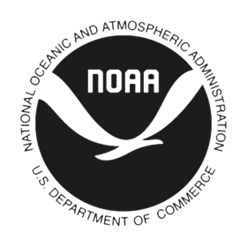COMMUNITY PLANNING APPROACH TO GREEN INFRASTRUCTURE AND HAZARD MITIGATION TOOLKIT
Communities face several challenges and complex decisions related to natural hazards, which are increasingly exacerbated by climate change. Furthermore, the increased frequency of extreme weather events creates a widespread challenge for managing stormwater, flooding, and extreme heat. Integrating mitigation and resilience strategies into multiple community plans and policies is essential if communities are to adapt to these climate challenges successfully.
The US EPA has recognized green infrastructure as a multi-benefit solution for addressing water-related issues identified through the local hazard mitigation planning process. This program is designed to support a community-based update of a multi-hazard mitigation plan and community resilience planning efforts, emphasizing implementing green infrastructure. The Community Planning Approach to Green Infrastructure and Hazard Mitigation Toolkit provides all materials necessary to evaluate the relevance and effectiveness of existing community policies and identify goals, motivations, and barriers for hazard mitigation planning, focusing on water resources, flooding, and green infrastructure. The Toolkit includes a program overview and community education and engagement materials.
Due to the multidisciplinary and process-oriented nature of the program, the planning approach and materials can be adapted for use throughout Great Lakes states and the North Central region. This program was funded through the Extension Disaster Education Network.
The program supports a collaborative community planning approach to evaluate the relevance and effectiveness of existing community policies and to identify goals, motivations, and barriers for hazard mitigation planning, focusing on water resources, flooding, and green infrastructure.
The facilitated meeting series includes:
- Discussions of local community resiliency;
- Reviewing existing plans and ordinances to identify opportunities and barriers for updates;
- Investigating costs, benefits, and target areas for implementing select green infrastructure practices; and
- Identifying potential strategies and next steps for community planning.
Meeting 1 overview:
- Listening session discussion – Goals, motivations, and barriers for hazard mitigation planning, community resilience, and green infrastructure
- Existing plan and ordinance review and feedback
- Community flooding/stormwater identification and mapping exercise
Meeting 2 overview:
- Discuss and prioritize future strategies, focusing on green infrastructure
- Incorporate maps, decision support tool data, tabletop discussion
- Planning and report next steps
- Mapping Community Green Infrastructure Recommendations exercise
The program tool kit includes pre-planning materials, agendas, handouts, and activities for the two community meeting sessions, example presentations, and a final action plan report template. The Rainscaping Education Program offered by Purdue University Extension, the University of Illinois Extension, and Illinois-Indiana Sea Grant is paired as an addition with the meeting sessions to support the implementation of green infrastructure projects in Indiana and Illinois communities. If interested in implementing the Rainscaping Education Program outside of Indiana or Illinois, please contact Kara Salazar (salazark@purdue.edu).
To learn more about the Community Planning Approach to Green Infrastructure and Hazard Mitigation program, contact:
Kara Salazar
Assistant Program Leader for Community Development
salazark@purdue.edu
Mary Komenas
Community Development Educator
mfoell@purdue.edu
Daniel Walker
Community Development Regional Educator
walke422@purdue.edu



